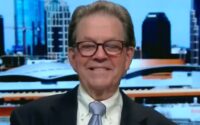GLOBAL MARKETS-Global stocks set for weekly loss as rate rise worries mount
(Updates prices, adds comment)
By Naomi Rovnick
LONDON, Jan 20 (Reuters) – Global stocks headed for their first weekly loss of the year so far as markets switched focus from China reopening to recession risks driven by central bank rate hikes.
The MSCI World Price Index edged 0.3% higher by midday in London, boosted by gains in Asia, after Chinese authorities said on Thursday that the number of COVID-19 patients needing critical care in hospitals had peaked. But the all-country equity gauge was also on course to notch up a loss of around 1.5% for the week.
Wall Street’s benchmark S&P 500 was on track for its worst weekly drop in more than a month, of around 2.5% at Thursday’s close. S&P futures traded flat ahead of the market open.
Some analysts say equities have been showing too much optimism about an economic improvement, as both the U.S. Federal Reserve and the European Central Bank remain resolute about tightening monetary policy to battle inflation.
Europe’s STOXX 600 share index, which rose 0.5% on Friday, has during the first three weeks of January, recovered almost half of 2022’s 12.9% loss. That bounce has been driven by China reopening trades and easing natural gas prices.
“The European market remains unprepared for the wave of pain that is coming from credit conditions tightening,” Andreas Bruckner, European equity strategist at Bank of America, said.
ECB President Christine Lagarde told the World Economic Forum’s Davos gathering on Thursday that the bank would stay the course with raising interest rates.
The Fed also looks set to sustain its tightening campaign, even after reports on Wednesday showed retail sales, producer prices and production at U.S. factories fell more than expected in December.
On Thursday, U.S. weekly jobless claims were also lower than expected, pointing to a tight labour market, which sent the S&P 500 0.8% lower.
Boston Fed President Susan Collins said the central bank would probably need to raise rates to “just above” 5%, then hold them there, while Fed Vice Chair Lael Brainard said that despite the recent moderation in inflation, it remains high and “policy will need to be sufficiently restrictive for some time”.
Government bond markets and riskier assets, such as equities and high-yield credit, had kicked off 2023 driven by “contradictory” narratives, Artemis fixed income investment manager Juan Valenzula said.
“We’ve had a monumental rally in government bonds,” he said, “based on the idea that the impact of rate hikes makes a recession more likely”.
“Risk assets are not reacting in a coherent manner,” he added. “They are focusing on a different economic outlook.
The 10-year US Treasury yield hit its lowest since mid-September earlier this week, as traders bet downbeat economic data would force the Fed to slow down the pace of its interest-rate hikes.
The key 10-year yield added around 4 basis points to 3.435% on Friday but remained far below the high of around 4.3% struck in October. Bond yields fall as prices rise.
The dollar index – which measures the U.S. currency against six peers, including the euro and yen – rose 0.3% to 102.34, holding within sight of Wednesday’s 7-1/2-month low.
The Japanese yen, which has been volatile as traders debate when the Bank of Japan might scrap its controversial policy of buying vast quantities of government bonds to suppress borrowing costs, fell 1.2% to 129.97 per dollar.
Elsewhere, crude oil prices continued to rise. Brent futures for March delivery were 30 cents, or 0.35%, higher at $86.46 a barrel, while U.S. crude advanced 49 cents to $80.82 per barrel, a 0.6% gain.
(Reporting by Naomi Rovnick and Kevin Buckland; Editing by Sharon Singleton, Kirsten Donovan)
[ad_2]
Source link


